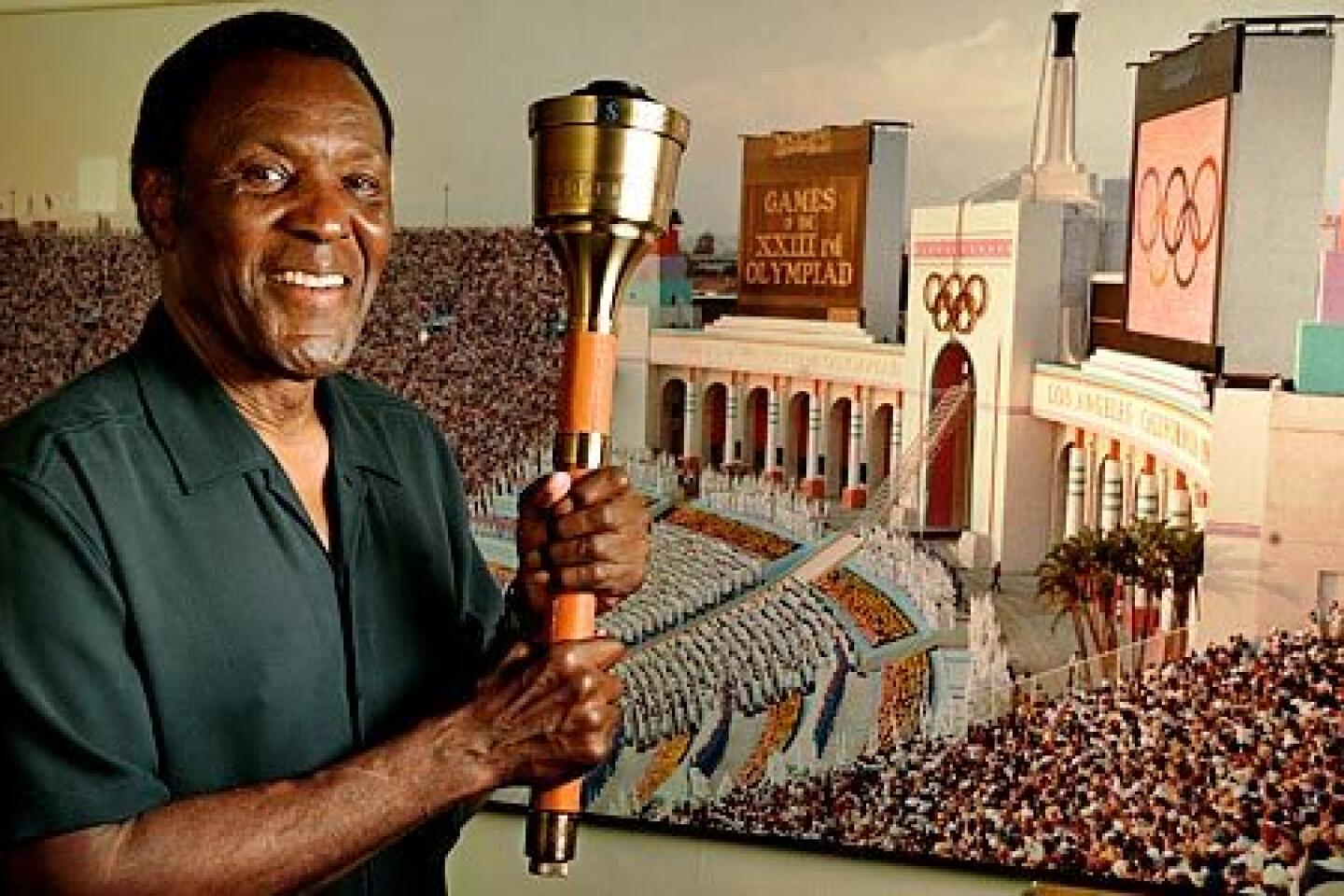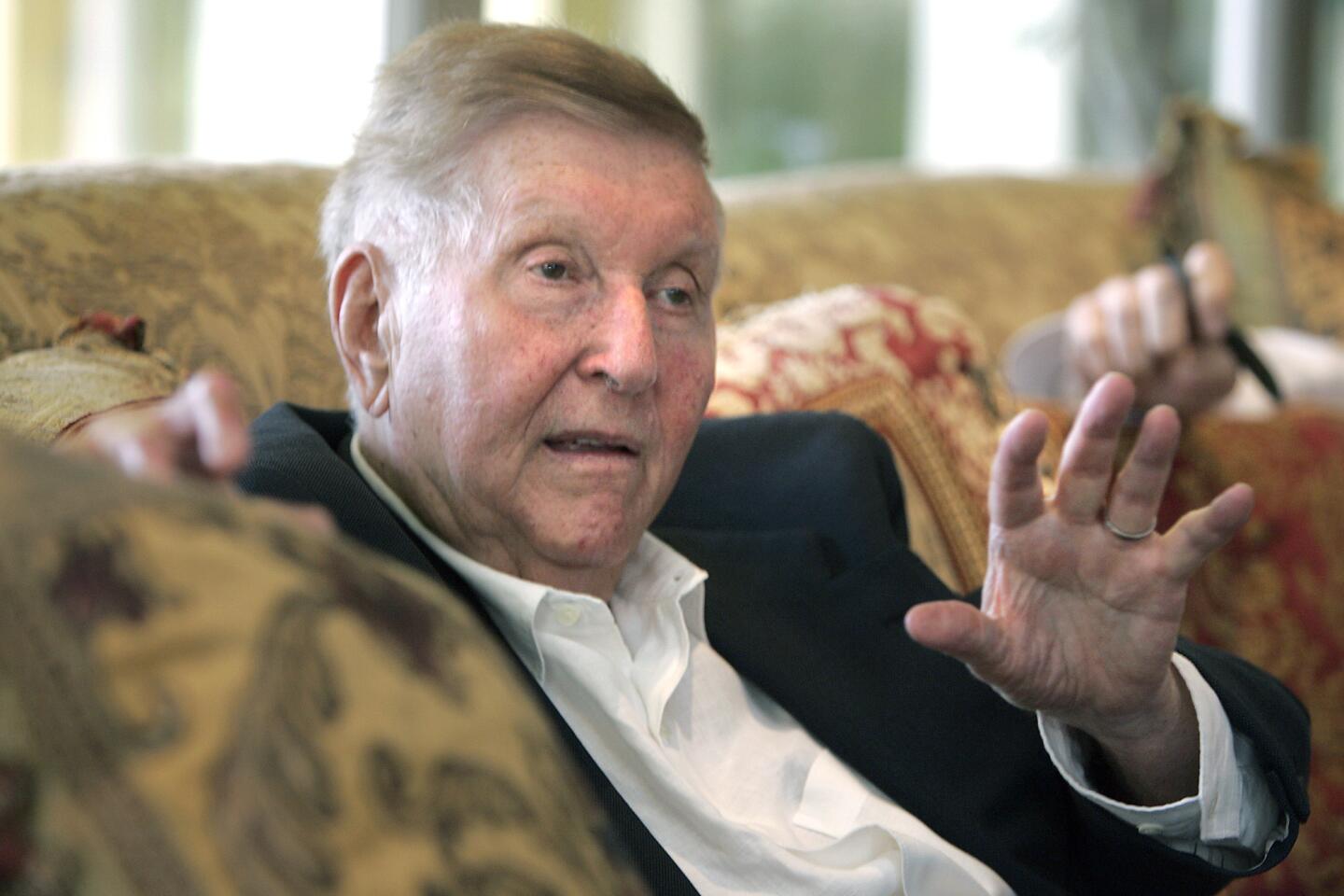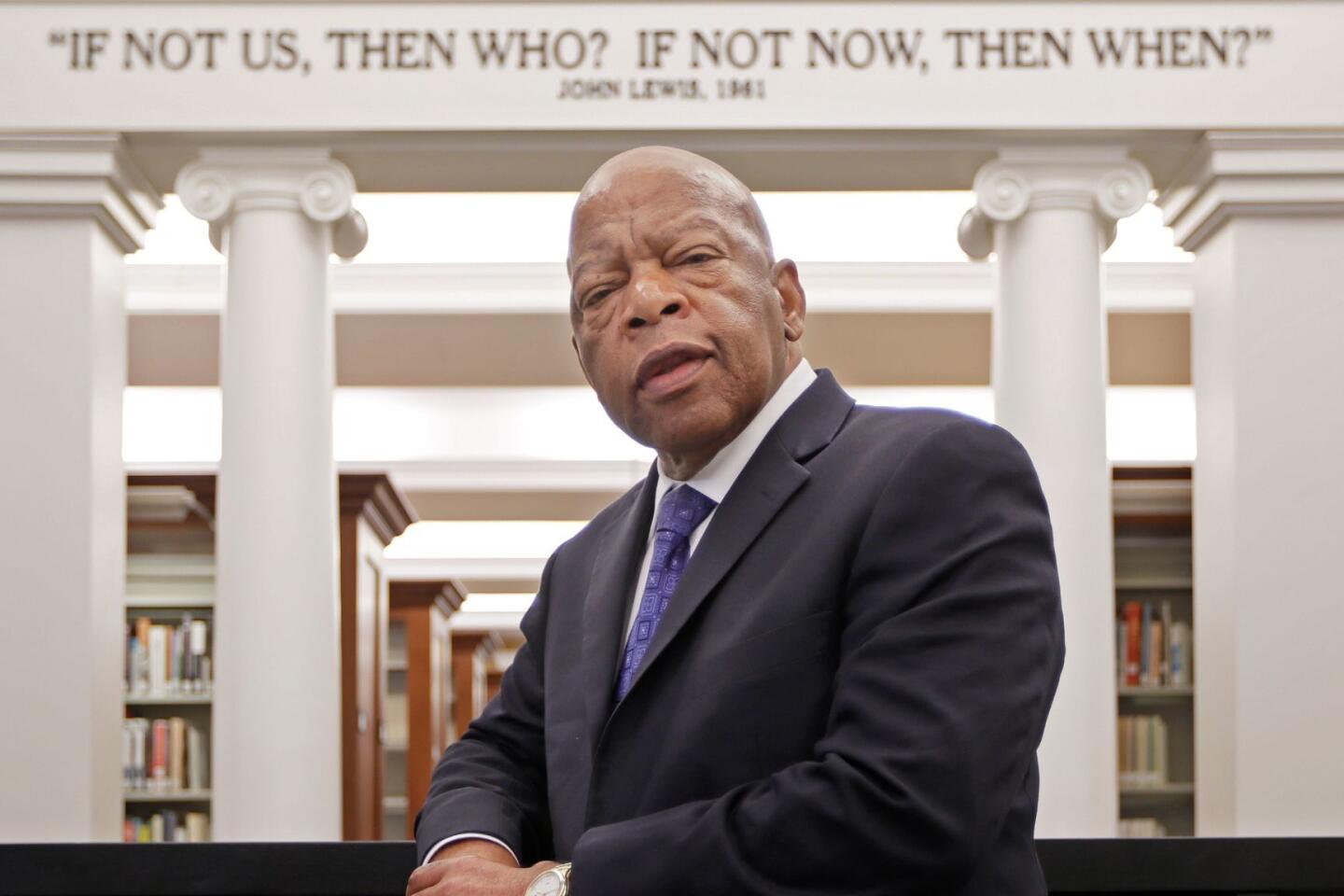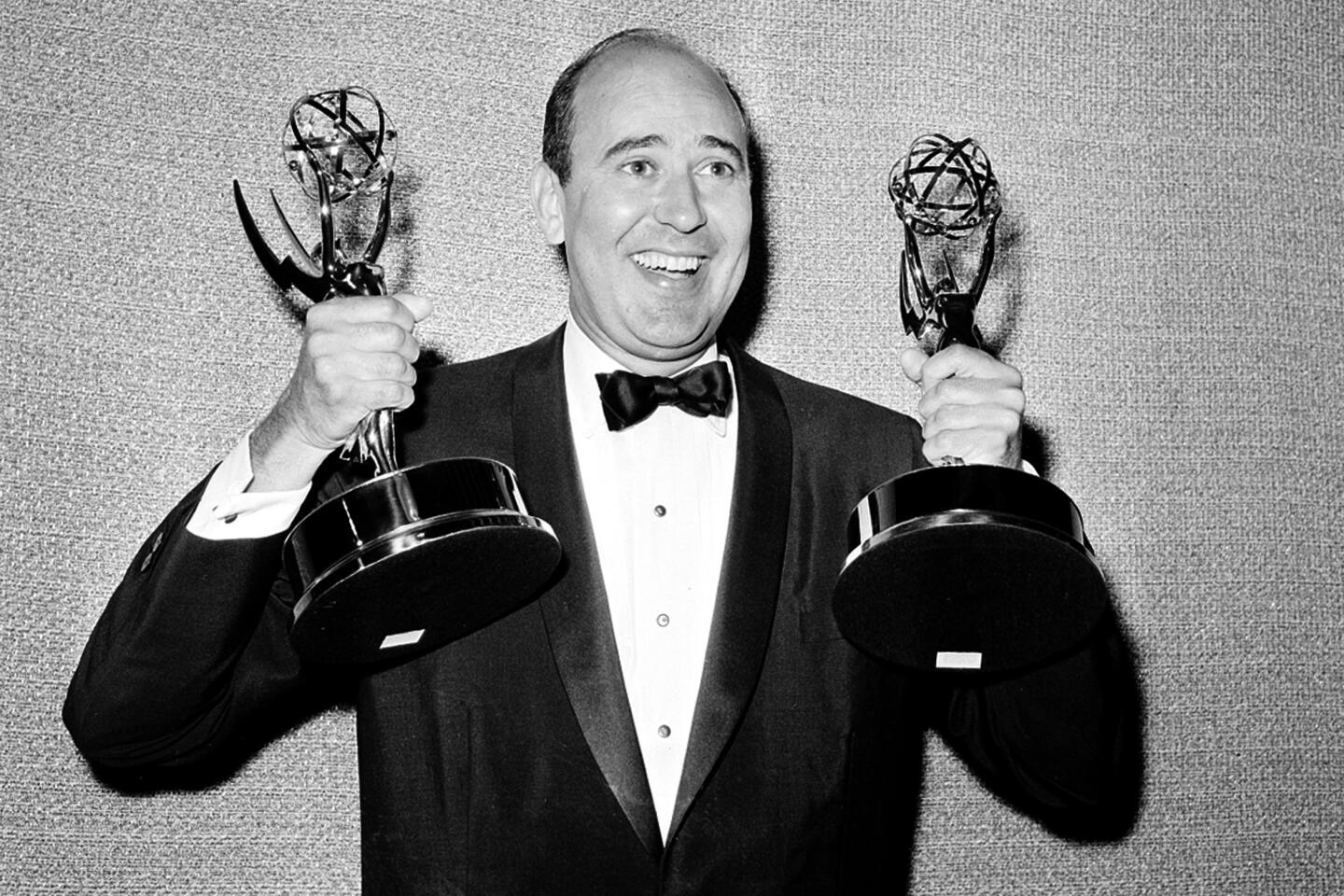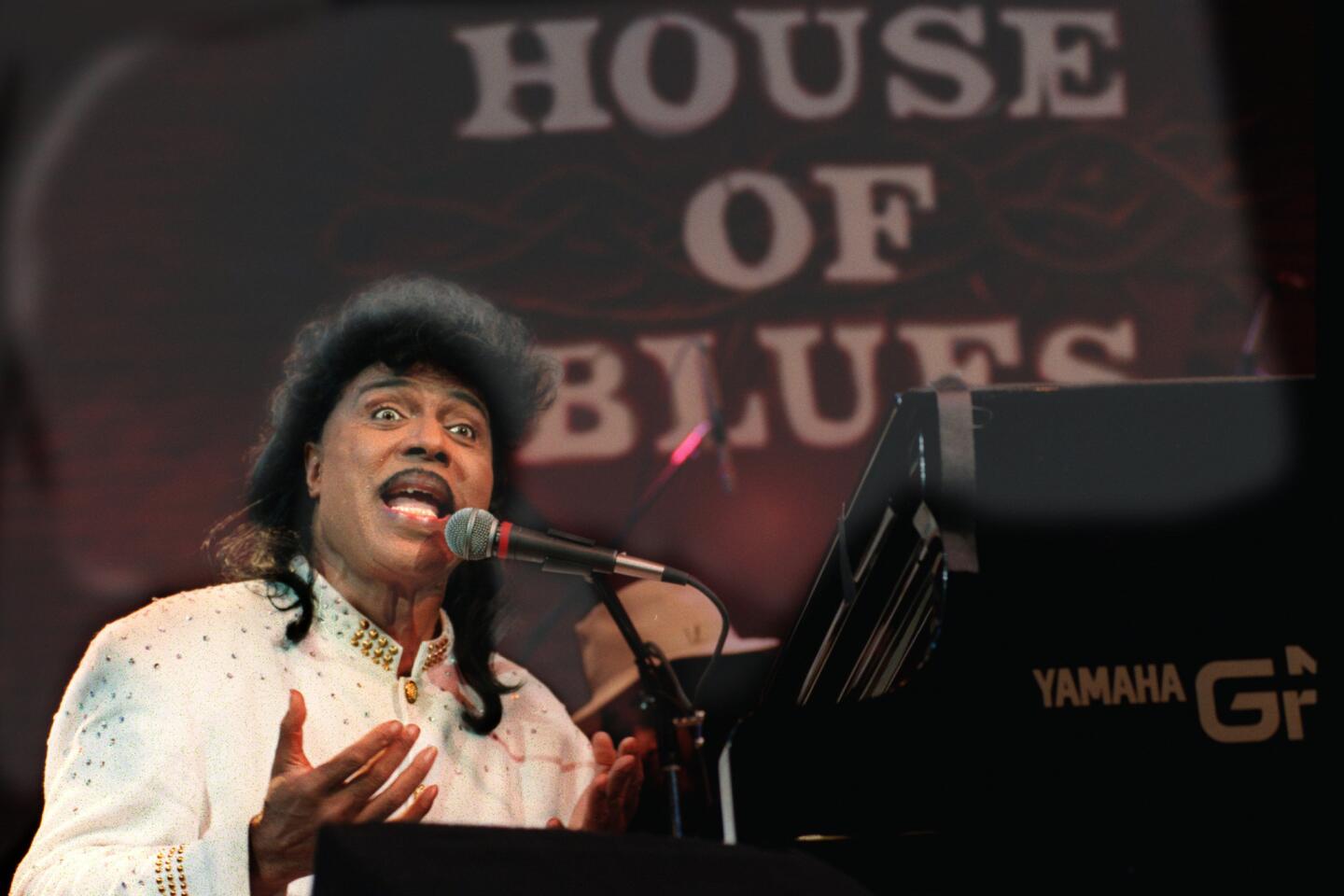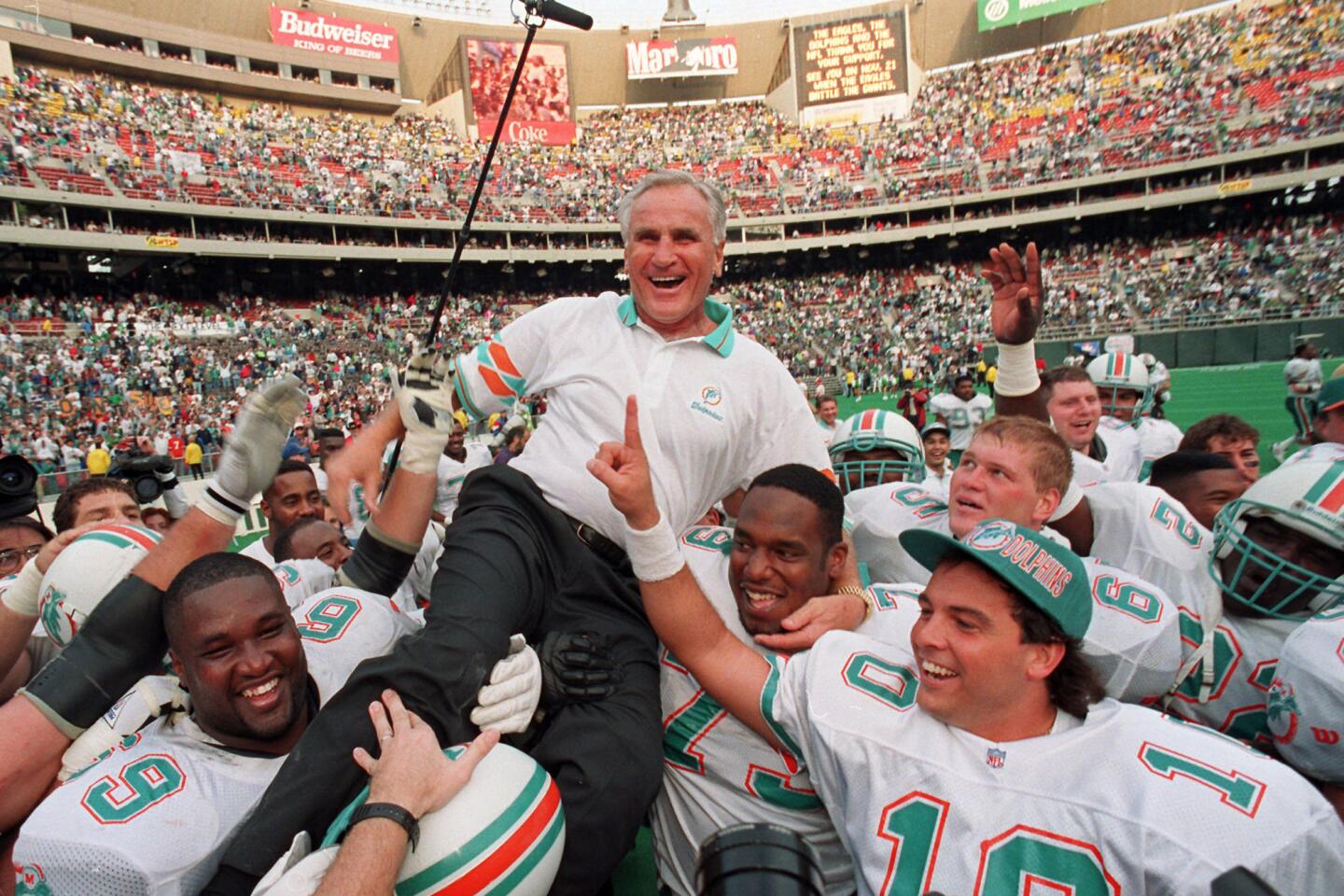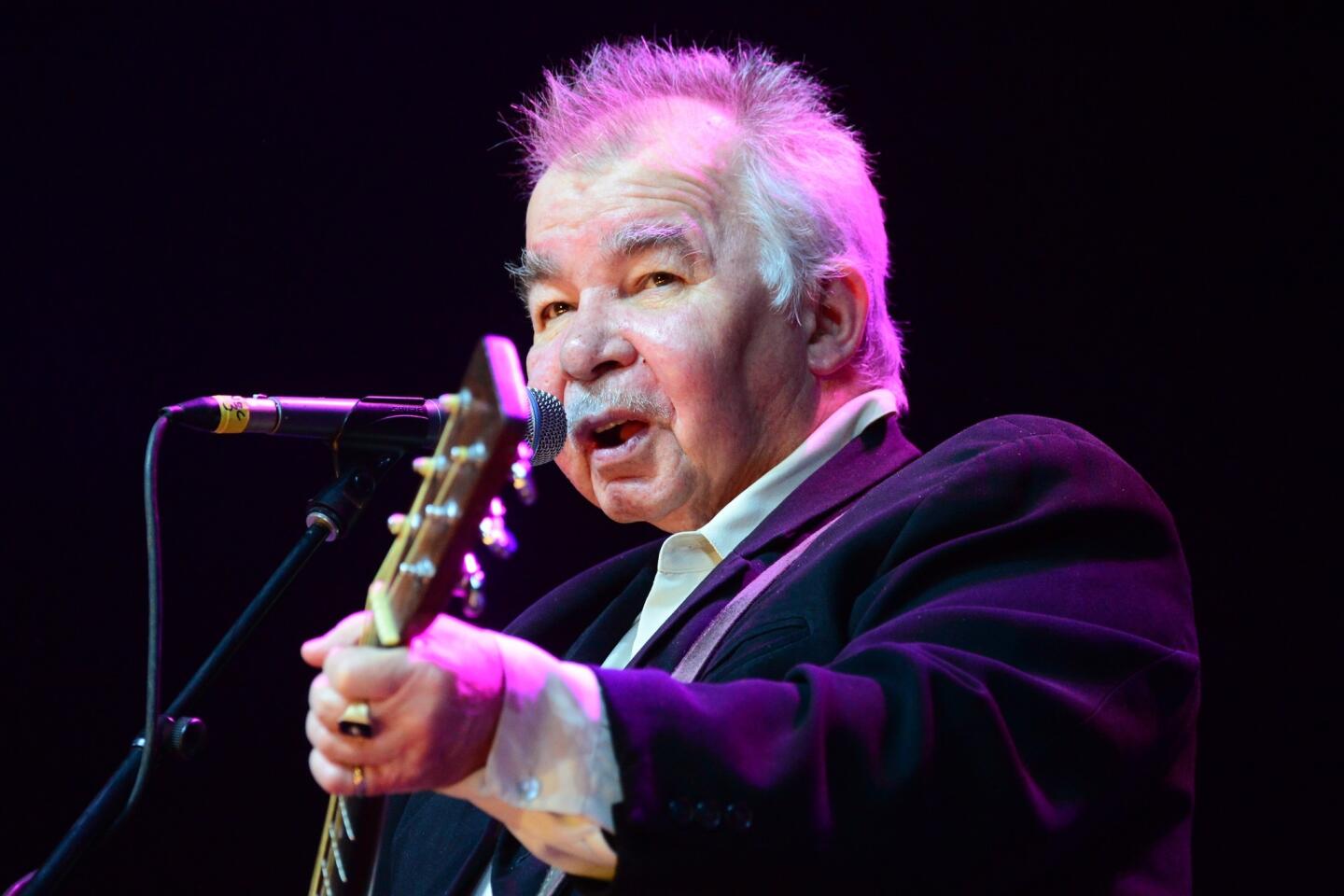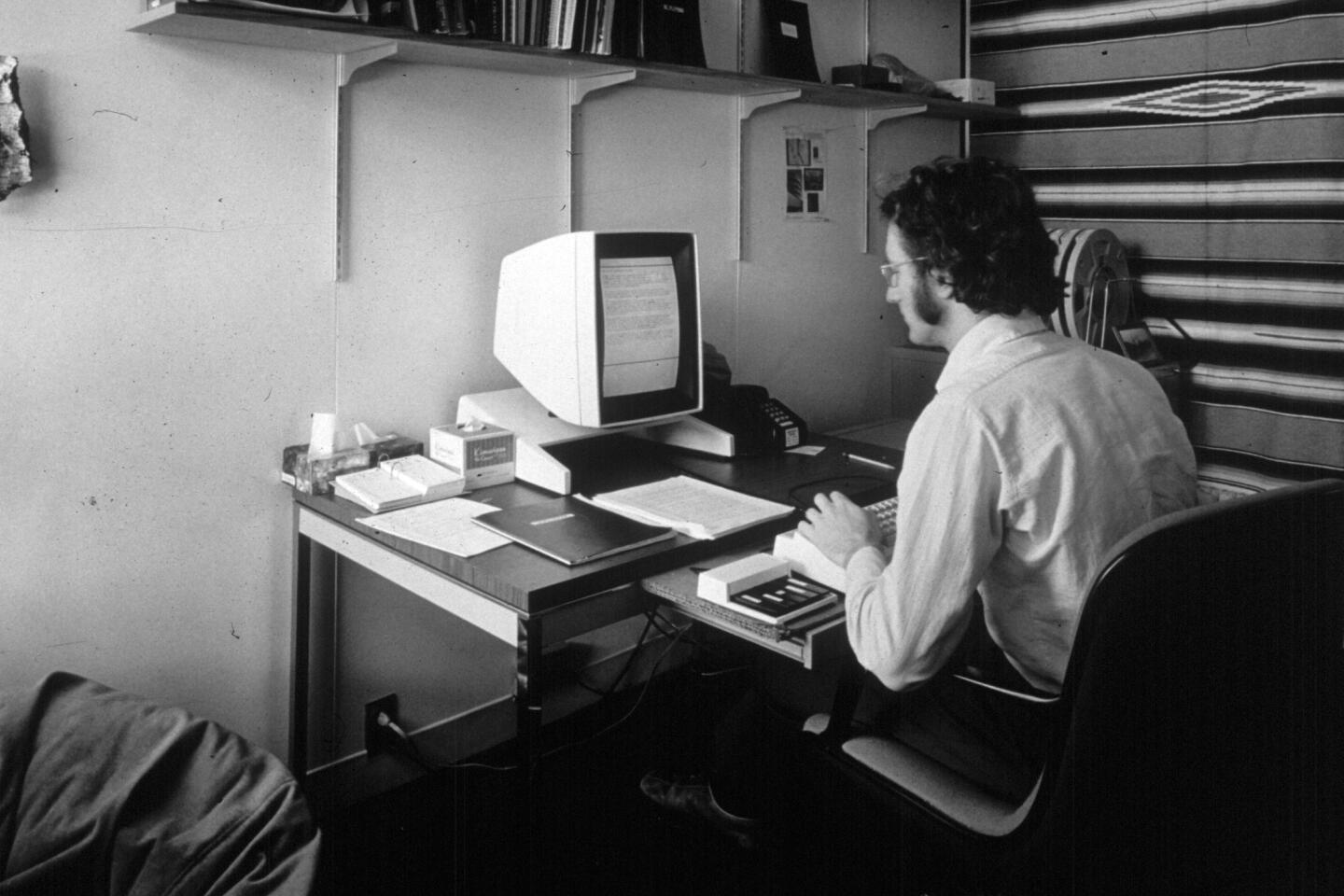Roy Horn, dark-haired half of flamboyant illusionists Siegfried & Roy, dies of coronavirus-related complications
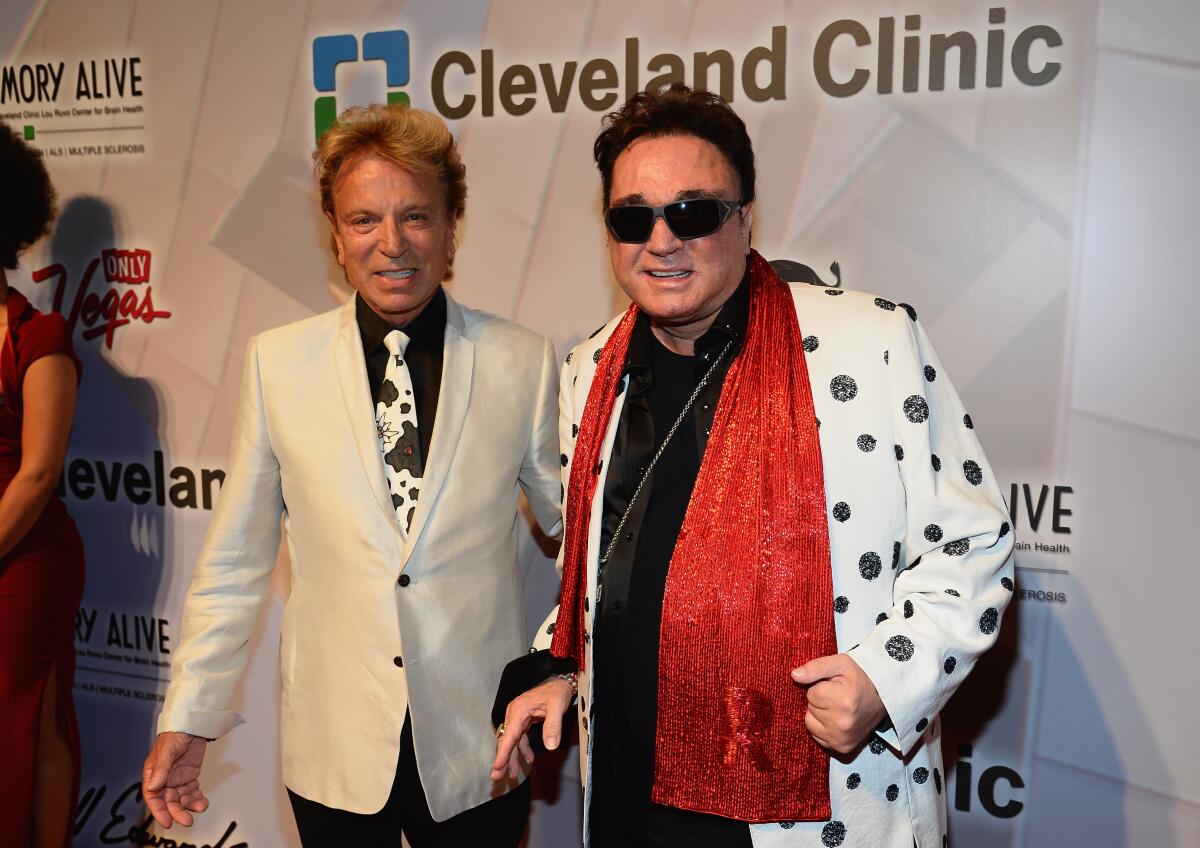
Roy Horn, the dark-haired half of Siegfried & Roy, the flamboyant, German-born illusionists whose lavish stage productions and trademark disappearing white tigers and lions made them one of the biggest draws on the Las Vegas Strip, died Friday. He was 75.
Horn, who suffered a severe wound to his neck when a tiger attacked him onstage in 2003 during a sold-out performance at the Mirage Hotel & Casino, died of complications from COVID-19, Siegfried & Roy announced in a statement.
“Today, the world has lost one of the greats of magic, but I have lost my best friend,” Siegfried Fischbacher said in the statement. “From the moment we met, I knew Roy and I, together, would change the world. There could be no Siegfried without Roy, and no Roy without Siegfried.
“Roy was a fighter his whole life including during these final days. I give my heartfelt appreciation to the team of doctors, nurses and staff at Mountain View Hospital who worked heroically against this insidious virus that ultimately took Roy’s life.”
During his more than 40 years teamed with Fischbacher, the animal-bonding Horn reportedly had never had an onstage accident working with the dozens of exotic cats featured in their act.
But 45 minutes into their 7:30 p.m. performance before a packed house at the Mirage, Horn introduced Montecore, a 7-year-old royal white Siberian tiger.
When the tiger refused to obey Horn’s command to lie down, Horn reportedly tapped the cat on the nose with his microphone to get his attention. The 600-pound animal responded by pawing Horn’s arm. And as Horn stumbled, the tiger lunged at the entertainer’s neck and dragged him offstage. Frantic crew members sprayed the animal with a fire extinguishers until it released Horn.
According to a family friend, Horn told the paramedics rushing him to the hospital, “Don’t kill the cat.”
Fischbacher later said in an interview that the tiger had been trying to help Horn after he slipped and accidentally harmed him by using too much force. The tiger, Fischbacher said, did not intend to kill Horn. If he had, he said, “I wouldn’t be here, Roy wouldn’t be here.”
Horn, who lost a large amount of blood and suffered a stroke after the attack, underwent multiple surgeries, including one to reduce swelling on his brain. Doctors said the entertainer, who was under heavy sedation and breathing through a ventilator two days after the attack, was able to move his hands and feet and to give a thumbs-up sign.
Known as “The Masters of the Impossible” and named “The Magicians of the Century” in 2000 by the International Magicians Society, Siegfried & Roy were a show business phenomenon.
At the Mirage, where they have performed their over-the-top illusion spectacle in the custom-designed, 1,504-seat Siegfried & Roy Theater, they entertained 700,000 people a year. Over 44 years, according to their manager, Bernie Yuman, the duo performed more than 30,000 live shows to close to 50 million people.
The duo had appeared at the Mirage continuously since 1990, when they signed their original $57.5-million, five-year contract with the hotel. In 2001, they signed a “contract for life” at the Mirage.
Steve Wynn, the original Mirage owner, once called Siegfried & Roy “the entertainment cornerstone of Las Vegas, and the most important single act in town, comparable only to Frank Sinatra.”
The elaborate Siegfried & Roy show, which cost $50 million to produce, featured complex stagecraft, liquid smoke, lasers, dozens of dancers and more than 30 exotic cats.
In the early 1990s, the finale to their sold-out shows featured Horn “magically” appearing on the back of a white tiger sitting on a mirrored disco ball; his partner and a dozen other animals then joined them as they all levitated skyward.
Jay Leno once called their act “the greatest show I’ve ever seen.”
With their heavy German accents, stylishly coiffed hair, chiseled features and glitzy costumes, Siegfried & Roy were Las Vegas icons. Dubbed “the Liberaces of legerdemain” by People magazine, they served as fodder for late-night comedians and were spoofed by “The Simpsons.”
Arnold Schwarzenegger, a close friend of the duo, told Vanity Fair in 1999 that Siegfried & Roy were “probably the hottest, longest-lasting and most spectacularly successful entertainers in the world. And the greatest immigration story I know: two guys who came over to this country, starting with nothing, who made their dream come true.”
Roy Uwe Ludwig Horn was born in 1944 in Nordenham, a town near Bremen, Germany. Raised by his mother and an abusive, alcoholic stepfather, Horn escaped his unhappy home life by seeking the company of animals.
He’d go for long walks in the nearby fields with his half-wolf dog, Hexe. He’d also spend hours at the Bremen Zoo, where he developed a bond with a cheetah named Chico. He eventually took an after-school job at the zoo, which was founded by a family friend, and helped care for and exercise the exotic spotted cat.
“I spent so much time with Chico that the zoo became like my home,” Horn recalled in an interview earlier this year. “Chico and Hexe were my family, my closest confidants.”
The pandemic’s toll: Lives lost in California
Hundreds of people have died in California due to the COVID-19 pandemic. These are some of their stories.
Horn left home at 13 in 1957 and became the personal bellboy to the captain of the T.S. Bremen, a German luxury liner that ran between Bremerhaven and New York. Horn met Fischbacher, a first-class steward who entertained passengers at night with his magic act. Needing an assistant for his act, Fischbacher enlisted Horn.
After the show, Horn asked Fischbacher, “If you can make rabbits and doves appear and disappear, could you do the same thing with a cheetah?”
“In magic,” Fischbacher replied, “anything is possible.”
On a return trip home, Horn later recalled, he “liberated” Chico from the zoo and smuggled him onto the ship in his laundry bag.
Fischbacher devised an illusion using the animal, and Chico became a permanent part of the act.
“In show business, in order to be successful you have to be different,” Fischbacher told Vanity Fair. “And when Roy showed me that cheetah, it made all the difference. I can tell you this: When I disappear from the lounge of that ship in the middle of the ocean, and reappear as a cheetah, this is better than pulling rabbits out of a hat. Yes, me and Roy, we are on our way. It is better than anything.”
In 1964, Siegfried & Roy took their successful cruise ship act on the road. Billed as Siegfried and Partner, they plied Europe in a Citroen, performing in small cabarets and theaters.
But they didn’t begin to gain media attention until they performed before Prince Rainier and Princess Grace of Monaco and a host of Hollywood celebrities at a 1966 Red Cross gala in Monte Carlo.
They went on to perform as Siegfried & Roy at the famous Lido and Folies-Bergere in Paris and, in 1967, they arrived in Las Vegas.
In 1981, after performing at the Tropicana, the Stardust and the MGM Grand, they opened their own show at the Frontier hotel. The show, “Beyond Belief,” ran for some 3,500 performances over the next seven years.
In 1987, the two men who were once told that “magic doesn’t work in Vegas,” signed to be the star attraction at the Mirage when the $640-million resort opened on the Strip in 1990. Variety proclaimed their contract the largest in the history of show business.
Eight years after debuting at the Mirage, Forbes magazine reported that Siegfried & Roy were the highest-paid entertainers in Las Vegas history, earning an estimated $58 million in 1996-97 (with an estimated net worth of more than $100 million).
They lived lavishly, in a Moroccan-Mission-style compound in West Las Vegas dubbed the Jungle Palace. Although they had lived together for decades, Horn told People magazine in 1993, “we live in completely different parts of the house and go on vacations alone.”
The compound includes the Garden of the White Tigers — a lush, eight-acre park, complete with a cascading waterfall, that serves as a habitat and breeding ground for their exotic cats. Horn bred several dozen rare white tigers at the compound, which are cared for with the help of a full-time veterinarian and trained attendants.
Horn never lost his love of the wild cats, which he pampered like a doting father.
Vanity Fair reported that Horn meditated each morning with a white tiger named Mantra. And until the cats reached the age of 1, they slept in bed with him. He also swam with his cats every day in their lake-sized pool.
“My animals are the love affair of my life,” Horn told People magazine. “They are the first ones I talk to in the morning and the last ones I speak to at night.”
Of his partner’s relationship with the animals, Fischbacher told Vanity Fair, “I respect it. I am awed by it. I enjoy the whole thing. I am grateful that Roy makes me a part of it.” But, the article made clear, Fischbacher was in charge of the illusions and Horn raised the animals.
Every day, the animals were driven to Siegfried & Roy’s 100-acre retreat outside the city for exercise, and their teeth were brushed three times a month. Horn also reportedly refused to use drugs to tranquilize the animals.
“An unhappy animal could not be onstage doing the things we do,” Horn told People. “In the wild, a tiger lived from 8 to 10 years, but here they live from 20 to 25.”
Horn kept the ashes of Chico, who died in the early 1970s, and his other deceased cats in urns by his bed.
Siegfried & Roy have been recognized by National Geographic and others over the years for their efforts in saving and protecting endangered animals, particularly white tigers, which are extinct in the wild.
They wrote two books, “Siegfried and Roy: Mastering the Impossible” (1992) and “Siegfried & Roy’s Gift for the Ages” (2000). And they told a glorified version of their rags-to-riches life story in “Siegfried & Roy: The Magic Box,” a 1999, 50-minute 3-D Imax movie narrated by Anthony Hopkins.
“When we thought about making the movie, we were thinking, will it give hope, will it give inspiration?” Horn said in a 2000 interview with the Contra Costa Times. “That’s what we wanted to achieve.”
As illusionists, Horn said, “we are messengers of a dream. We all want to believe in our hearts that such things are possible.”
On Tuesday, Siegfried & Roy manager Yuman told NBC’s Katie Couric that Montecore was “with us in our inner sanctum at the Siegfried & Roy secret garden.”
“Roy would be the last one to blame the tiger,” Yuman said.
More to Read
Start your day right
Sign up for Essential California for the L.A. Times biggest news, features and recommendations in your inbox six days a week.
You may occasionally receive promotional content from the Los Angeles Times.

